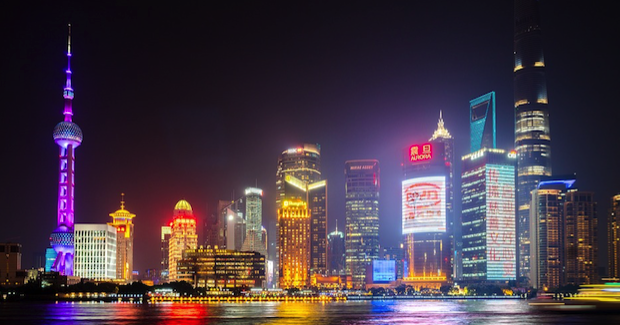More Economic Uncertainty Hangs over China

Official and unofficial data confirms that the Chinese economy stabilised in the middle of 2016. But there is still a lot of disagreement about the country’s growth outlook over 2017 and beyond.
Three important forces are likely to determine economic trends in 2017: property development, infrastructure spending and manufacturing investment. These forces are also the source of much uncertainty about the future of China’s economic policy.
GDP growth reached a steady 6.7 per cent over three consecutive quarters in 2016, a performance that fuelled renewed speculation about the reliability of official data. The consensus was that economic activity was bottoming out. Big data analysis and grassroots investigations came to the same conclusion. Activity in many sectors started to pick up again during mid-2016.
This was first due to the beginning of a turnaround in the property market at the end of 2015. Property investment grew modestly from a negative figure to around 5 per cent. The gathering boom in the property market was associated with stronger markets for electronics, furniture, building materials and automobiles.
Infrastructure spending also served as a stabilising force, with local government spending picking up again through various forms of investment funds.
Finally, new economic activity strengthened. This was seen in both higher sales of materials, energy and internet products as well as upgrades of traditional products such as household appliances and large machinery.
What remains unclear is whether this floor on growth is sustainable. During China’s National Day holiday, many local governments announced policy measures to cool down the property market. In November, property sales growth had already turned negative. While it is difficult to assess what impact this reversal in property markets will have on growth in the year ahead, the positive effect of the property sector will likely peter out.
The political cycle suggests that infrastructure spending will continue, at least through 2017, as the country prepares for the 19th National Party Congress in October. This could further worsen local governments’ balance sheets and overall investment efficiency.
Manufacturing investment is also a source of continuing uncertainty and has been extremely weak for the past few years. During mid-2016, manufacturing investment started to pick up again. Two theories explain the latest improvement: either property-related increases led to higher demand for manufacturing goods or investor sentiment steadied as 55 months of producer price index deflation came to an end.
Most probably the downward pressure on growth will continue in 2017 unless the government steps up its macroeconomic stimulus policy. There is an ongoing debate about whether the current growth slowdown, which started in 2011, is cyclical or structural. While this discussion is useful for understanding the persistence of China’s slowdown, it misses the need for the upgrade of industries that are behind the slowdown of growth.
For several decades, Chinese economic growth was powered by export and investment, while consumption remained relatively weak. Behind those two growth engines was a rapidly expanding manufacturing industry—labour-intensive manufacturing at one end, which produced exports, and heavy industry at the other end, which produced investment goods. These two sectors were the backbone of the ‘world’s factory’ and the ‘China miracle’.
Times have changed. Labour-intensive manufacturing has rapidly lost competitiveness as wages and other costs have risen. Heavy industry is suffering from massive overcapacity problems. The pillar industries that once supported Chinese economic growth can no longer carry their own weight. China needs to build a new set of industries focused either on higher-end manufacturing or the services sector.
To some extent, this trend reflects a typical middle-income trap story. Most of the old industries, built on a low-cost advantage, are no longer commercially viable as costs have risen alongside income. The challenge that China faces today is not just to recognise cyclical or structural slowdown but to understand the nature of the battle between new and old industries. The most important policy objective is to facilitate industrial upgrading by creating and developing new industries and encouraging old industries to exit.
The economic policy choices for China in the year ahead are extremely difficult. This is partly, of course, because of external uncertainties — a result of an unclear global economic outlook and a new US administration headed by President-elect Trump. But the domestic policy options are also narrowing as the country faces the so-called ‘risky trinity’ — declining productivity, rising leverage ratios and narrowing policy flexibility.
There are two key areas to watch closely. One is the growth target and growth policy. Authorities should lower the annual growth target. The government committed to achieving 6.5 per cent growth during the 13th Five-Year Plan, but this does not necessarily mean that it must hit 6.5 per cent growth every year or every quarter. A growth target that is too high will neglect structural reform. It is now extremely difficult for both monetary and fiscal policies to support growth. Instead, China needs to lower the near-term growth target, allow economic restructuring to occur and achieve sustainable growth in the long run.
State-owned enterprise (SOE) reform is crucial. Industrial upgrading is occurring across the country, except where overcapacity is overwhelming. The number of zombie firms is large and government controls are tight and comprehensive. In these areas, the private sector is not dynamic, innovation is weak and young people are leaving.
The challenge for China right now is not how to support the creation of new industries but how to facilitate the smooth exit of old industries. And this comes back to the question of SOE reform—will the government have the courage to bankrupt those inefficient and unprofitable zombie SOEs?
Yiping Huang is Professor of Economics at the National School of Development, Peking University.
This article was originally published on the East Asia Forum website on 2 January 2017. It is republished with permission.





